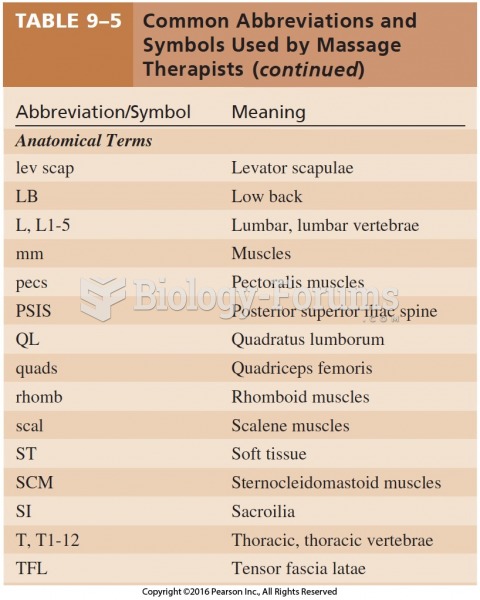|
|
|
Nearly 31 million adults in America have a total cholesterol level that is more than 240 mg per dL.
Cytomegalovirus affects nearly the same amount of newborns every year as Down syndrome.
Everyone has one nostril that is larger than the other.
The most common childhood diseases include croup, chickenpox, ear infections, flu, pneumonia, ringworm, respiratory syncytial virus, scabies, head lice, and asthma.
Hypertension is a silent killer because it is deadly and has no significant early symptoms. The danger from hypertension is the extra load on the heart, which can lead to hypertensive heart disease and kidney damage. This occurs without any major symptoms until the high blood pressure becomes extreme. Regular blood pressure checks are an important method of catching hypertension before it can kill you.







